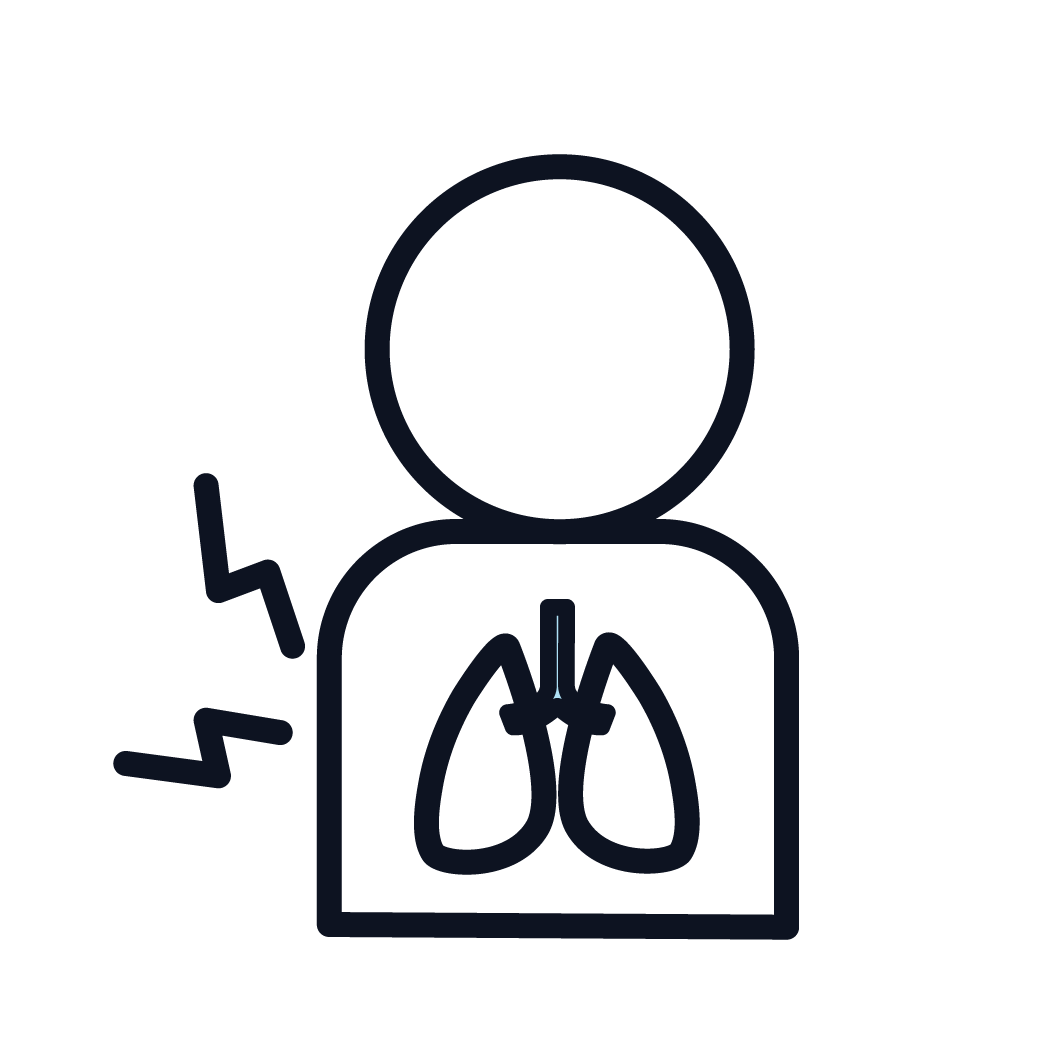A thoracoscopy is a surgical procedure used to diagnose the cause of abnormal tissues in the linings of the lungs and chest cavity. Using a thin, flexible light with a camera attached to the end, doctors can visually examine the area inside the chest, surrounding the lungs. Your doctor may order a thoracoscopic test when less-invasive tests (such as x-rays) cannot be used to make a final diagnosis. The procedure may require you to stay overnight in the hospital and cause some side effects afterward.
An endoscopic procedure that a doctor can use to examine the space inside the chest but outside the lungs. Areas that can be assessed with a thoracoscopy include the lymph nodes, lung tissues, chest wall, or the tissue lining of the lungs (pleura). This procedure is a type of endoscopy, which is a medical procedure where the doctor puts a thin, tubular instrument into the body to examine a specific area. There are different types of endoscopies based on the location in the body that needs to be assessed.
Your doctor may choose to administer a thoracoscopy if you’re having lung problems or symptoms of an issue in the respiratory area. Patients experiencing symptoms of pleural mesothelioma, asbestosis, or other lung conditions are prime candidates for a thoracoscopy-based diagnosis.
This procedure can also be used for other things besides determining illness. It can be used to remove a section of the lung that may contain a tumor, or it can be used to remove fluid from the pleural space around the lungs if it’s causing the patient to have breathing issues.
If a patient develops pleural mesothelioma, diagnosing it can be difficult. This is mostly in part because of how similar symptoms can be to other illnesses and diseases. A biopsy is the most reliable way to diagnose mesothelioma in a patient. This procedure consists of the medical professional removing a sample from the affected area and sending it to a lab to be analyzed by researchers for an official diagnosis. Thoracoscopies can be used to take biopsy samples in patients too.
Sometimes symptoms of pleural mesothelioma can be mistaken for other lesser illnesses. When this happens, it can be all too easy to neglect going to the doctor and getting the necessary medical diagnosis to move forward with treatment. Visit your doctor for an examination if you experience any of the following pleural mesothelioma symptoms:
If you have these symptoms and receive a diagnosis you are unsure of, you’re entitled to a second opinion from another doctor. This way, you can be sure you didn’t receive a misdiagnosis.

A patient’s experience receiving a thoracoscopy can be different from others, depending on the reason the test is being administered. Your healthcare provider will be able to give you a better look at what your future thoracoscopy will be like. Thoracoscopies can be used to take biopsy samples in patients too.
It’s essential to keep your doctor informed on all the medications you are taking beforehand. This includes over the counter prescriptions, vitamins, herbs, and supplements. Make sure you let them know of any allergies you have as well.
Several days before the test, your doctor may ask you to stop taking blood-thinning medicines (including aspirin). Hours before the test, you may be asked to avoid eating or drinking. Your healthcare provider will give you more specific instructions that must be followed.
Depending on what the thoracoscopy is used for, you may need to stay in the hospital overnight or for a few days. It could also be an outpatient test, where you can leave the same day. You will be given anesthesia through an IV line in the vein (intravenous) for the test. This will put you into a deep sleep, where you won’t feel anything.
Next, the doctor inserts a tube into your throat and hooks it up to a machine that will help you breathe during the procedure. Once the tube has been added, the doctor will make a small incision in the chest between two ribs. Then, they’ll insert a flexible tube with a light and video camera attached (thoracoscope) into the cut.
After that, another cut is made below the underarm, so the cutting tool can be inserted. Usually, this is when some of the air in the lungs on that side is released. This helps doctors see the abnormal area more clearly. A CT scan or ultrasound may be used to position the thoracoscope properly. After this, the doctor may perform a biopsy of the pleural space or remove any peculiar spots to be checked by the research lab.
If the thoracoscopy is being performed to remove fluid buildup in the lungs, a third cut will be made in the lower chest wall. This is when a flexible chest tube (catheter) will be inserted so the fluid can drain out. Once the procedure is complete, all tools will be removed, and the cuts resealed.
The procedure generally takes approximately 30 to 90 minutes, depending on what the doctor needs to do.
You may experience pain or discomfort afterward, so your doctor will offer you painkillers to help manage this.

Your healthcare provider can order a chest x-ray after thoracoscopy to check for additional lung problems. Make sure to tell your doctor about any side effects or issues you may encounter after the test.
Jennifer Verta thrives as a digital content writer at Mesothelioma Hub. She has been producing content for clients since before she graduated from the University of Colorado at Denver with a Bachelor of Arts in Communication and a Minor in English Writing. Jen’s mission is to help promote awareness of mesothelioma to as many people as possible by providing only the most up-to-date and accurate content available. When she isn’t cranking the gears at work, Jen can be found snowboarding, hiking, catching live music, or socializing with friends.
American Cancer Society. (2020). Endoscopy. Retrieved on April 28th, 2020 from https://cancer.org/treatment/understanding-your-diagnosis/tests/endoscopy.html
American Cancer Society. (2019). Thoracoscopy. Retrieved on April 28th, 2020 from https://cancer.org/treatment/understanding-your-diagnosis/tests/endoscopy/thoracoscopy.html
Cancer Research UK. (2018). Thoracoscopy and Pleural Biopsy. Retrieved on April 29th, 2020 from https://cancerresearchuk.org/about-cancer/mesothelioma/getting-diagnosed/tests-diagnose/thoracoscopy
Greillier, L., Cavaukkesm A., et al. (2007). Accuracy of Pleura Biopsy Using Thoracoscopy for the Diagnosis of Histologic Subtype in Patients with Malignant Pleural Mesothelioma. Retrieved on April 29th, 2020 from https://acsjournals.onlinelibrary.wiley.com/doi/pdf/10.1002/cncr.23034
Medscape. (2019). Medical Thoracoscopy. Retrieved on April 29th, 2020 from https://emedicine.medscape.com/article/1970079-overview#a1
Shiel, W. (2020). Medical Definition of Pleural Space. Retrieved on April 29th, 2020 from https://medicinenet.com/script/main/art.asp?articlekey=4947
Xu, L., Yang Y., et al. (2018). Malignant Pleural Mesothelioma: Diagnostic Value of Medical Thoracoscopy and Long-Term Prognostic Analysis. Retrieved on April 28th, 2020 from https://ncbi.nlm.nih.gov/pmc/articles/PMC5883515/#__ffn_sectitle